
Khan video with examples about subsets.
- Subject:
- Mathematics
- Material Type:
- Demonstration
- Provider:
- Khan Academy
- Date Added:
- 03/15/2018

Khan video with examples about subsets.

In this Khan Academy activity, students will answer questions about a subset of a sample space.
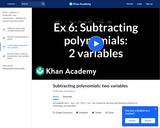
This video simplifies (4x^2y - 3xy + 25) - (9y^2x + 7xy - 20).

This problem provides students with an opportunity to discover algebraic structure in a geometric context. More specifically, the student will need to divide up the given polygons into triangles and then use the fact that the sum of the angles in each triangle is 180 degrees.
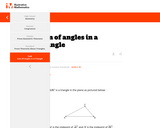
The goal of this task is to provide an argument, appropriate for high school students, for why the sum of the angles in a triangle is 180 degrees.
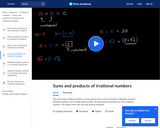
The sum of two irrational numbers can be rational and it can be irrational. It depends on which irrational numbers we're talking about exactly. The same goes for products for two irrational numbers. This video covers this fact with various examples.

Video series that include proofs/explanations of "sum & product of two rationals is rational," "product of rational & irrational is irrational," and "sum of rational & irrational is irrational." Series also includes videos on worked examples and interactive practice for students.
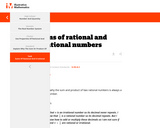
Brief task of critiquing the explanation of a sample student.

Students will gain an understanding of how to create two-way frequency tables and interpret relative frequencies in the context of types and colors of candy.
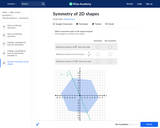
In this Khan Academy activity, students will answer questions about the symmetry of quadrilaterals, triangles, and regular polygons.

Students review the solution of systems of linear equations, move on to systems of equations that represent a line and a circle and systems that represent a line and a parabola, and make conjectures as to how many points of intersection there can be in a given system of equations. They sketch graphs of a circle and a line to visualize the solution to a system of equations, solve the system algebraically, and note the correspondence between the solution and the intersection. Then they do the same for graphs of a parabola and a line.

Practice with systems of linear equations.

Worksheet that solves systems of linear and quadratic equations.
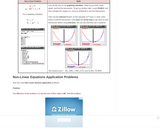
Article on how to solve systems of nonlinear equations with problem solving and validating answers.
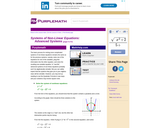
Article on harder systems of non linear equations.
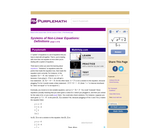
Article on system of non-linear equations.
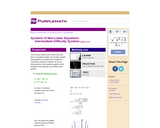
Article for teachers explaining what a system of non linear equations is and how to solve it.
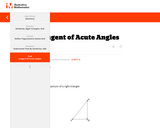
Practice finding sin, cos and tan of all angles less than 90 degrees.

This video ompares expected probabilities to what really happens when experiments are run.
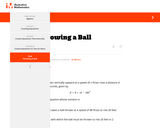
This task has a couple of aspects designed to encourage students to attend to the structure of the equation and the meaning of the variables in it. By focusing on different variables in parts (a) and (b), it fosters flexibility in seeing the same equation in two different ways: first as an equation in t with constants v and d, then as an equation in v with constants t and d.